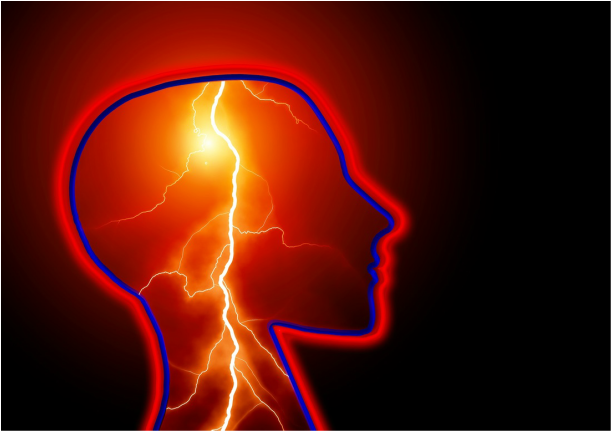
We live under the false premise that stroke happens only to “old” people. Based on an article published by the AMA Journal, there has been a rise in strokes in people who are age 20 to 54 years of age primarily in specific ethnic populations.
On a national basis, stroke has decreased partially due to corporate wellness programs which make employees more aware of the risk factors that contribute to stroke, and general overall media attention to the problem. The example used in the article shows one study which was done using 1.3 million people in parts of Cincinnati and Kentucky. The estimated number of individuals under the age of 55 has trended upward to one in five!
Common risk factors for stroke
- Untreated High Blood Pressure
- Uncontrolled Diabetes
- Tobacco use
- Drug and Alcohol use
- High Cholesterol
- Genetics
There are three different types of stroke:
- Ischemic stroke – is triggered by a blockage which prevents oxygenated blood from reaching brain cells which causes them to die. This type of stroke is more common in people age 65 and older.
- Hemorrhagic stroke – This is sometimes referred to as a “brain bleed” which also damages brain cells. This type of stroke is more common in people younger than 55.
- Transient ischemic attack, or TIA – Often referred to as a “little or mini stroke” or a “precursor stroke”. This happens when there is a short term blockage to the brain.
A stroke can be debilitating and change your life. Depending on the type and severity of stroke you have, it can leave you with permanent disabilities. Lesser strokes can take weeks or months to recover.
Stroke Often Overlooked in Young People
Some strokes are misdiagnosed in young people as a migraine headache or a seizure when it is actually a stroke or TIA. Precious time is wasted by not treating it quickly and the brain bleeding continues causing greater damage.
Unfortunately about 20% of individuals who have a stroke between the ages of 40 and 69 are at a higher risk of having another one within five years. If for any reason you think you may have had a “mini-stroke”, or any other stroke symptom, seek emergency treatment as soon as possible even if your symptoms dissipate.
How Will I Know if I am Having a Stroke?
There are certain signs and symptoms that occur regardless of what type of stroke you experience and regardless of your age. The symptoms may not be as prominent if the person is younger. That is why it is often misdiagnosed.
The AMA (American Heart Association) uses an easy to remember acronym, F.A.S.T. (Face, Arm, Speech, Time)
- F: Face Drooping – One side of the face droops or is numb. Instruct the person to smile. Is the smile uneven?
- A: Arm Weakness – Numbness or weakness in one arm. Tell the person to raise both arms. Does one arm drift downward?
- S: Speech Difficulty – Slurred speech. The person may be unable to speak or hard to understand. Ask the person to repeat a simple sentence, like “The sky is blue.” Is the sentence repeated correctly? Is it easy to understand?
- T: Time to call 9-1-1 – If someone shows any of these symptoms, even if the symptoms go away during a short period of time, call 9-1-1 right away. Tell the operator that you think the person is having a stroke. Record the time when the symptoms first appear and share that information with the physician in the ER.
No matter your age, if you think you or someone you know is having a stroke, don’t take any chances and call 911. Brain cells can be destroyed very quickly when they are deprived of oxygenated blood. Don’t hesitate and get help immediately.
Remember to take note of when the person was fine and when they started having symptoms. How long was the person having symptoms before calling 9-1-1?
Lifestyle Changes that Prevent Stroke
Take care of yourself and you can help prevent stroke. Start by eating healthily no matter your age. This can reduce your risk significantly. In many cases, a stroke can be prevented with a few simple healthy lifestyle changes, such as eating a balanced diet, exercising regularly and getting your blood pressure checked.
- Eliminate smoking. Smoking doubles the risk of stroke.
- Maintain a healthy weight. Obesity increase contributes to high blood pressure, elevated cholesterol and diabetes. All of these conditions increase your chance of a stroke.
- Get fit and get moving. Consult with your doctor regardless of your age. Your doctor can advise you on a healthy diet and exercise. Maintaining a healthy weight greatly reduces stroke and other diseases.
- Keep track of your blood pressure and cholesterol. One of the highest risks of stroke is hypertension. You can increase the likelihood of stroke by one and a half times if your BP is not controlled. High cholesterol clogs your arteries which makes it harder for blood to flow through them and get oxygen to your brain cells.
- If you take birth control pills……. Talk to your doctor, especially if you have a family history of stroke, and be alert of symptoms. Avoid alcohol or do not exceed more than 2 drinks per day. The American Stroke Association states that excess alcohol can increase your chances of stroke by 50%.

Leave a Reply